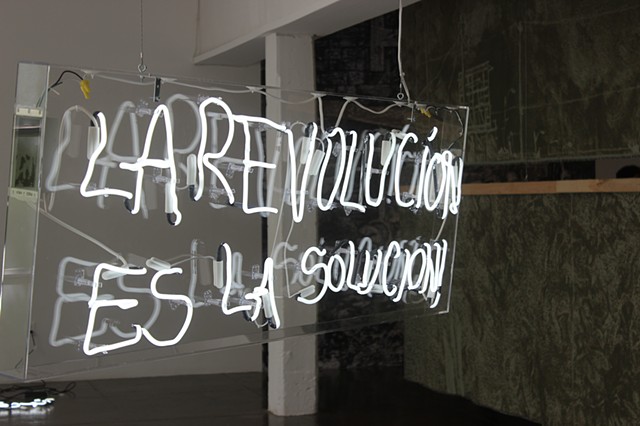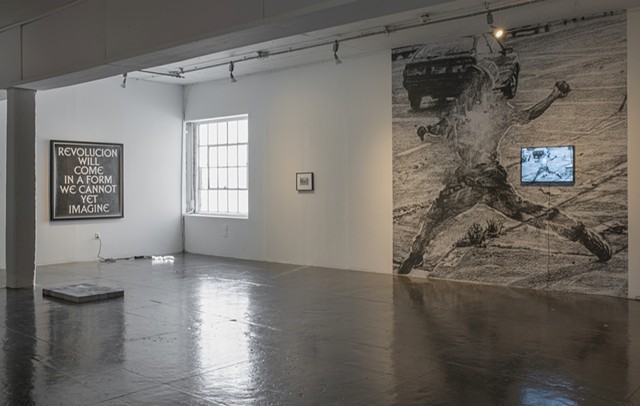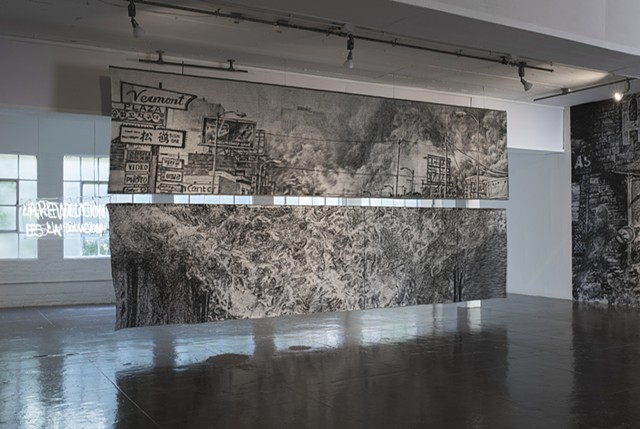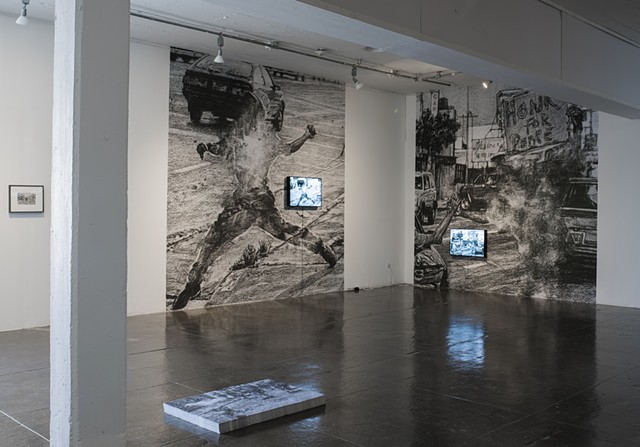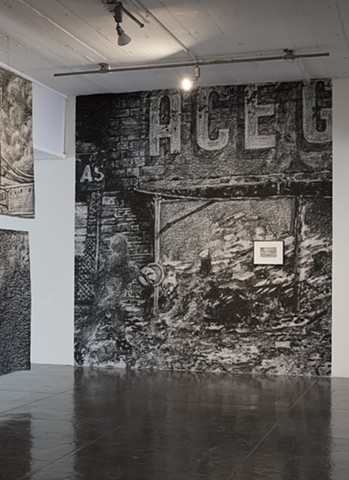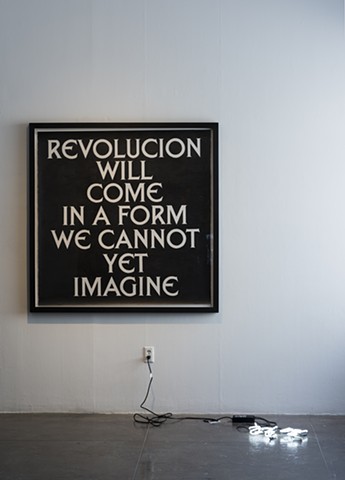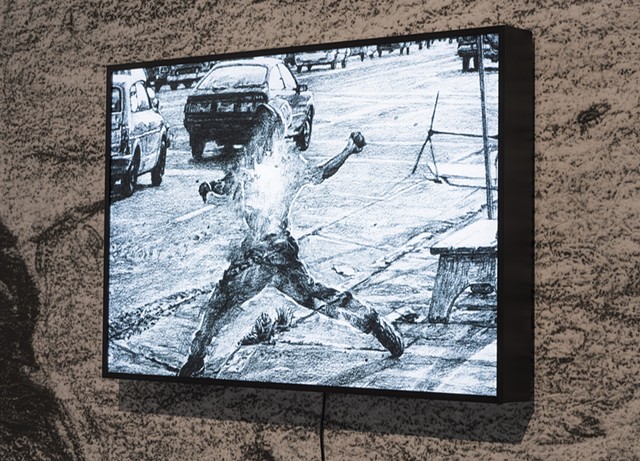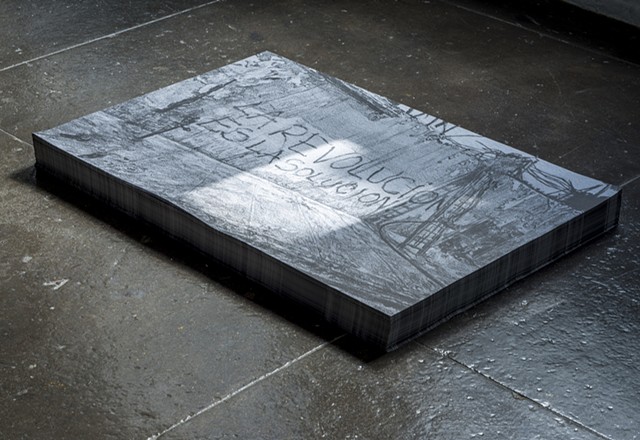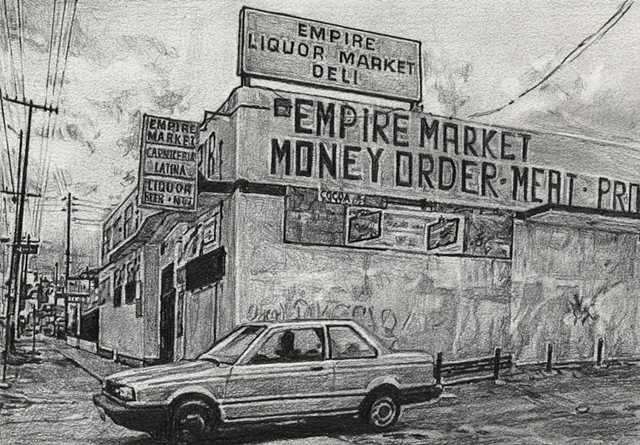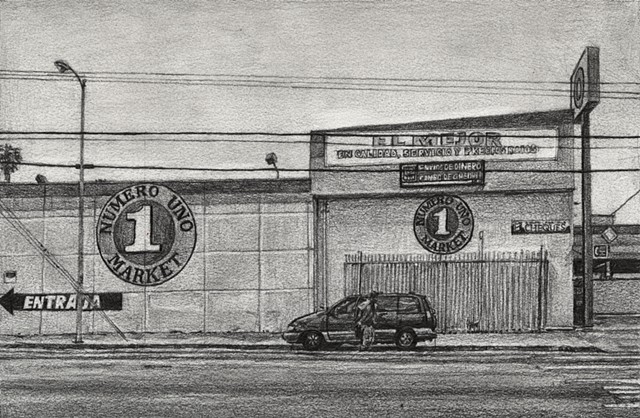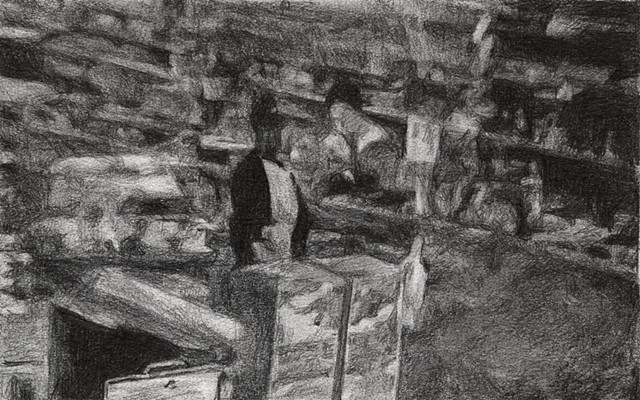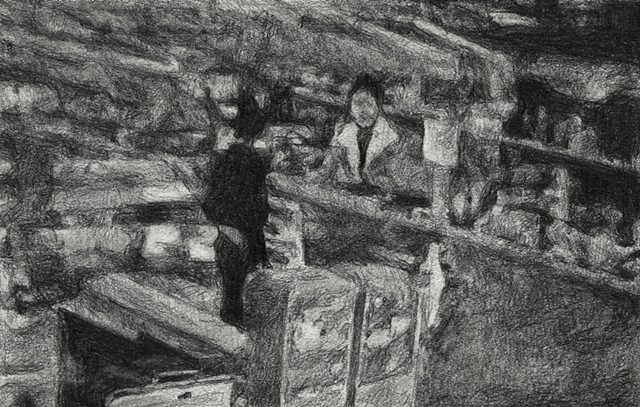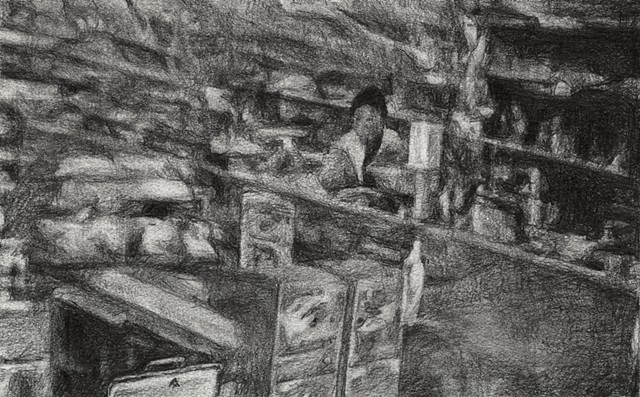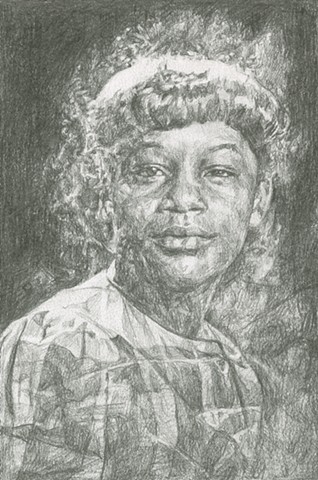untitled (la revolución es la solución!) (2017)
Originally commissioned and produced by Artpace San Antonio
Photography (installation view) credit Adam Schreiber
Glasstire (by Christina Rees & Brandon Zech)
SA CURRENT (by Dan R. Goddard)
Mass Appeal (by Mike Steyels)
Conversation with Yoshua Okón
Can you please describe the works in your exhibition and their historical framework?
My exhibition, untitled (la recolución es la solución!), consists of three parts. First part is five drawings that depict the killing of Latasha Harlins, a fifteen-year-old African-American girl who was shot in the head by Soon Ja Du, a Korean-American store owner at Du’s store, Empire Liquor in South Los Angeles on March 16, 1991.
Second part of the project co-opts the work of photojournalists taken during the LA uprising in 1992. These works employ a stratagem of digital removal/blurring of the human body from the original photos prior to re-render figureless drawings in graphite, and then adopt various methods of display such as framed drawings, enlarged prints of the drawings as wall installation, photo light box and tapestry.
Lastly, third part is various text works such as a neon work traced from the graffiti during the uprising and other neon works – my handwriting of “revolution” in both Korean and Arabic, and a graphite drawing of text talking about the future of revolution.
Why do you think that a historical moment like the LA riots of the early nineties can be a useful tool to think about our present? Why do you think it is important to rethink and reinterpret this moment?
I think revisiting historical moments in general is a great way to rethink about our present and the future as they are completely interconnected. That being said, the LA Riots in 1992 provides great insights into looking at the present with historical perspective in regards to issues like segregation, racial conflicts, role of the state and the media in the midst of social injustice and unrest. I am not necessarily trying to reinforce the idea our present is the result of our past but rather believe rethinking/reinterpreting/rewriting the past certainly changes our ideas about the future, which is the key to my project.
Why did you decide to blur the bodies in your drawings?
When blurring/removing human figures in my drawing, I am surely thinking about a visual metaphor about all the lives and memories lost and injured during the riots and other social unrest, but at the same time, I am also interested in taking out these bodies from the photojournalistic popular images that continue to create racialized figures and perpetuate the stereotypes through graphic depictions of violence as the images circulate repeatedly through the media.
How does the idea of presenting the same images in different formats and mediums connect to your discourse?
In a way, I am appropriating various commercial methods of display and repetition of visual imagery such as large prints, wall installation, billboard size tapestry, neon and poster, all of which also have political connotations with the style of propaganda.
Through creating a bodily experience using the impact of a large-scale installation and political text works, I am subverting advertising conventions to make political statements. However, ultimately my desire is for the viewers to remain critical and skeptical about any form of propaganda including my own message that I am tying to convey through the project.
In your exhibition you are critical of identity politics and seem to imply that identity politics are part of the problem. In what ways do you think that the US obsession with race is unproductive and a source for violence? Can you elaborate?
I think the obsession with race and identity politics prevents us from discussing more structural problems like class issues, capitalism, neoliberalism, extremely militarized form of policing by the state, etc. This is clearly not to say racism is not part of the problem but I often encounter constant censorship, self-censorship, and division caused by this obsession, under which we are pressured to perform our identities “correctly”. However, the question is who benefits from this censorship and division?
In what ways do you think that the superfluous racialized interpretation of conflicts like the LA riots are preventing us from addressing more structural and complex problems like poverty, alienation and marginalization?
Framing socially dramatic multi-ethnic resistance like LA Riots as White-Black conflict or Korean-Black conflict not only misrepresents the message of the protest but also supports de-legitimization of the protest and the rhetoric of the “mob”, which is actually what President Bush called the protestors. As a result, the victims of complex social economic problems become the face of the “mob” narrative, which makes us hard to address the fundamental problems that sparked the conflict in the first place.
Ironically in my exhibition we still see “race” in spite that all the human figures have been blurred and drawn only in graphite because our perception of race is so deeply registered with certain representation.
You talk about the radical emancipation of otherness. About the importance for us to stop thinking about ourselves as "others". Why do you think that is desirable?
My friend Beatriz Cortez recently shared how Spinoza wrote that one way to decrease our own power is to want recognition from others. Desire instead things that make you free and increase your power to act, he wrote. Beatriz shared this quote in the middle of our conversations regarding Jimmie Durham’s retrospective exhibition and the debate over his claim of Native American ancestry.
She says, “I wish I could tell Jimmie Durham that I feel emboldened and inspired and strengthened by his stance on identity politics, by his Spinozian disregard for recognition, by his fierce declaration that the center of the world is where he stands, by his rejection of identities as they were known in the 20th century, by his way of creating an aesthetic that invites us to imagine Indigenous peoples as our contemporaries as part of the future.”
When the oppressive system constantly makes us feel otherness, the best thing we can do is to refuse giving power to the system to define us. I believe that as artists we have power of imagining the future, and the future I desire is not a place where we are recognized by the system but a place we dismantle the structure and see beyond. To stop thinking about ourselves as “others” is the beginning.
Can you please talk about the role of imagination in the context of revolution?
Because of the preconceived notion, I think our imagination about revolution is very loaded with its political meaning. The revolution I suggest through the project is not the kind of one that we already know. Looking at and studying the past will certainly open up our eyes but I think critical imagination will take us to somewhere beyond the place we already feel familiar with.
I would like to share a quote from Jack Halberstam’s writing. “We must all change the things that are fucked up and change cannot come in the form that we think of as “revolutionary” – not as a masculinist surge or an armed confrontation. Revolution will come in a form we cannot yet imagine.”
